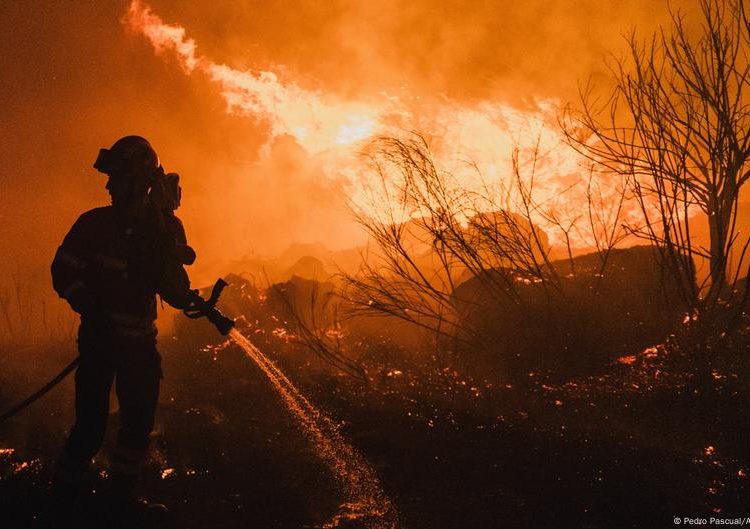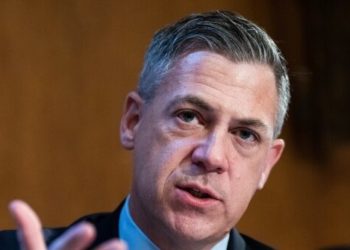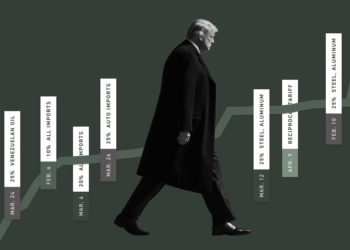Congratulations to Zohran Mamdani, who has become the mayor-elect of New York after a stunningly effective campaign. He began it with little name recognition, let alone support, and captured New Yorkers’ attention with a joyful, social-media-driven campaign that focused on the city’s onerous cost of living. After winning the Democratic primary in June, he reached out to critics and displayed a pragmatic streak. From beginning to end, he outcompeted New York’s tired political establishment, vanquishing technocrats with more experience as well as the incumbent mayor and a former governor. On Tuesday Mr. Mamdani won a comfortable victory.
This board did not support his primary campaign, owing to our concerns about his policy proposals and his inexperience. But we are rooting for his success. New York — the world’s most dynamic city, but one where many residents feel priced out of a good life — needs him to succeed. The city’s direction is especially important now, when President Trump is flouting the law to consolidate power and falsely casting the country’s biggest cities as out of control. He has already begun to treat Mr. Mamdani as a foil.
For Mr. Mamdani to be effective, he will need to grapple with the recent history of big-city civic leaders promising bold, progressive change. They have mostly delivered disappointment, including in Chicago, San Francisco, Seattle and Portland, Ore., as well as in New York City itself under Bill de Blasio. They have tolerated a level of disorder that many voters found unacceptable and struggled to make progress on affordability or K-12 schools. Mr. de Blasio had one major success that Mr. Mamdani justly cites as an inspiration: universal pre-K, which has helped hundreds of thousands of children. Still, Mr. de Blasio’s overall record made him so unpopular that he could not win the Democratic nomination for a House district in Brooklyn after he left office.
Mr. Mamdani, who campaigned on sweeping promises, can build a more positive legacy by focusing on tangible accomplishments. He should take notes from successful mayors, moderate and progressive alike, including Muriel Bowser of Washington, Mike Duggan of Detroit and Michelle Wu of Boston, who have delivered concrete solutions to specific problems. Mr. Mamdani cannot solve economic inequality, the problem that fueled his campaign. But he can make progress. He can build more housing. He can expand the availability of child care and good schools. He can improve bus and subway speeds.
If he succeeds, he will offer a model of Democratic Party governance at a time when many Americans are skeptical of the party and have departed Democratic-run states for Republican-run ones. Across U.S. history, political progressives have a proud record of using government to ameliorate extreme inequality and enabling more Americans to live well. Mr. Mamdani has an opportunity to write the next chapter in that story.
In almost every area that featured prominently in the mayoral campaign, Mr. Mamdani can improve life in New York by marrying his admirable ambition to pragmatism and compromise. We will focus on six areas, and offer a yardstick for each.
1. Housing
The cost of housing is a defining problem of New York life. The city faces an affordability crisis mostly because its political leaders have sharply limited construction since the 1960s. They have made it difficult to replace existing buildings with larger ones in a misguided effort to preserve communities. The effect has been gentrification. Constricted supply has led to higher prices.
Until recently, Mr. Mamdani seemed determined to ignore the government’s role. He blamed landlords and developers and argued for more stringent rent stabilization, which does nothing to help people who do not already live in stabilized apartments. But housing is one of the areas in which he has demonstrated a willingness to listen.
In his campaign, Mr. Mamdani said that he had changed his mind about the need for more private development. That is vital because private developers have far more capacity to expand the housing stock than the government. He can make a difference by backing a bolder version of Mayor Eric Adams’s City of Yes plan, allowing denser development around transit stations and reducing requirements for elevators, among other things.
Mr. Mamdani is correct that the government also has a crucial role in subsidizing housing for lower-income New Yorkers, and he has proposed the construction of 200,000 rent-stabilized housing units. The plan faces obstacles, but the goal is a good one.
The yardstick: Experts estimate that New York needs about half a million new homes over the next decade, so a good measure of Mr. Mamdani’s performance will be whether the number of units under construction climbs toward 50,000 a year.
2. Transportation
Mr. Mamdani has pledged to make buses both free and faster. Of the two goals, speed is more important.
Faster buses — and subways — would help almost all New Yorkers, especially those who commute longer distances. Today, local buses travel at an average speed of just eight miles per hour. A dedicated bus lane on 14th Street in Manhattan has shown that improvement is possible, leading to faster speeds, fewer crashes and more riders. (Unfortunately, the Trump administration has halted a similar plan for 34th Street.)
Mr. Mamdani’s plan for free buses would obviously reduce costs for many New Yorkers, but it would leave the system without the revenue it needs to pay for speed improvements. Free buses could also reduce the sense of security for riders, turning buses into homeless shelters. Trying to wish away trade-offs like these is one of the mistakes that progressive leaders elsewhere have made.
A better idea, championed by transportation planners, would enact a reduced fare for all riders on major bus routes, particularly those used by low-income riders. If Mr. Mamdani and Gov. Kathy Hochul can work together to make this happen, they would speed commutes and persuade more riders to use the transit system rather than cars.
The yardstick: Mr. Mamdani should aspire to raise average bus speeds to 10 miles per hour — a failed pledge of Mr. de Blasio’s — and average subway speeds closer to 20 miles per hour than the current 17.
3. Child care
A typical New York family with young children today pays more than one quarter of their incomes for child care, leaving too little money for everything else. Mr. Mamdani has promised to deliver free, universal child care starting at 6 weeks old. It is a worthy goal. Decades of evidence have made clear that high-quality child care is a good investment, for both children’s development and parents’ ability to work.
He is unlikely to achieve this goal in full, given its costs and the lack of an obvious revenue source. He favors tax increases on the wealthy and corporations, which Ms. Hochul opposes. Still, it would be a signature accomplishment if he could fix the many problems with the current preschool system for 3-year-olds, including the long distances some families must travel to claim open spots, and begin to create a universal care program for 2-year-olds.
The yardstick: Only about two-thirds as many children are enrolled in the program for 3-year-olds as are in the one for 4-year-olds. By the end of 2027, all 3-year-olds should be able to enroll in a class convenient to their homes.
4. Public safety
Even though crime has fallen over the past couple of years, polls show that many New Yorkers remain concerned about it. Their worries are legitimate. Crime is still considerably higher than it was before the Covid-19 pandemic began. The rate of major felonies — a category that includes car thefts, burglaries, felony assaults, rape and murder — is on pace to be about 25 percent higher this year than it was in 2019.
The past few decades have offered strong evidence about how to reduce crime, including lower-level crimes that foster a sense of disorder. The solution involves substantial policing, with officers who know the communities they patrol. Yet New York employs almost 3,000 fewer police officers than it did pre-Covid, a decline of 8 percent. Fortunately, Mr. Mamdani has stopped using the anti-police rhetoric he once did, and said he would ask Jessica Tisch, the current commissioner, to stay in the job. She has presided over crime declines this year and wants to hire more officers.
Mr. Mamdani continues to favor alternatives to police officers in certain situations, such as encounters with mentally ill people. Some of these ideas have shown promising results elsewhere, although they typically require collaboration between social-services workers and police officers, given the safety risks. Ultimately, New York should pursue an all-of-the-above approach that combines more officers and alternatives when feasible.
The yardstick: Major crime should return to the levels of the late 2010s, if not lower. That would require a decline of about 25,000 major felonies relative to the current annual level.
5. Education
Mr. Mamdani has given less attention to education policy than he has to some other areas. He has even proposed that the mayor give up control of the city’s schools and decentralize authority to teachers and parents. That would be a mistake. The K-12 school system, like early child care, is crucial to the city’s future. And the most successful models of educational progress have depended on a strong central authority.
Children in Mississippi and Louisiana, for example, have made exciting recent gains in reading thanks to statewide policies that combine teacher training and high standards; most students there cannot advance to fourth grade without meeting a literacy minimum. Chicago outpaced other big cities in the 2010s with a top-down model in which the city held principals accountable for their students’ academic progress. There are no similarly inspiring stories involving cities where mayors ignored the schools.
We hope Mr. Mamdani uses the power he will soon have to improve the nation’s largest school district. He should be careful not to get bogged down by divisive issues — such as the future of relatively small gifted and talented programs — and focus on the programs that educate the most children.
The yardstick: Only 29 percent of eighth graders in New York are proficient at reading and only 23 percent are proficient in math, according to federal data. That is roughly average for a large U.S. city. It is also unacceptable. Both numbers should rise substantially under the Mamdani administration.
6. Jobs
Many business leaders are wary of Mr. Mamdani, if not outright alarmed, because of his embrace of socialism. But some executives who have met with Mr. Mamdani since his primary win have emerged hopeful. Both he and they should recognize that they have a common interest in the city’s well-being and in preserving its status as a hub of business and finance.
Mr. Mamdani’s No. 1 promise is to make New York more affordable for residents. He should extend that goal to the city’s small businesses, which also are struggling. Prime targets include simplifying regulations and making better use of tax policy to support small businesses. One example: Landlords should have an incentive to offer longer leases to independent businesses.
The yardstick: More businesses have closed than opened in recent quarters. Mr. Mamdani should set a goal of increasing the number of businesses operating in New York by 10 percent during his first term.
Mr. Mamdani will take office on Jan. 1, 2026, with a reservoir of good will. He inspires young people who are cynical about politics. He will be the city’s first Muslim mayor, its youngest mayor in more than a century and its first immigrant mayor since the 1970s.
But the reasons that many New Yorkers are skeptical of him also deserve to be taken seriously. He had almost no management experience before his campaign, and extreme rhetoric was his normal mode of communication until recently. He called the New York Police Department “a major threat to public safety.” He initially refused to condemn Hamas after its Oct. 7, 2023, massacre in Israel. To this day, he proudly identifies with the Democratic Socialists of America, whose platform supports open borders, voting access for noncitizens and a weaker U.S. military.
He can win at least some of his skeptics over by getting results as mayor. He should start by building a leadership team light on democratic socialists and heavy on officials with records of accomplishment and proven management skills. He should then remain laser-focused on tangible improvements to city life. If he can build a more affordable city where New Yorkers feel as safe as they did in the early 2010s, where the subways and buses move more quickly, where both schools and early child care improve and where good-paying jobs are plentiful, he will have a claim on being one of the city’s great mayors.
The Times is committed to publishing a diversity of letters to the editor. We’d like to hear what you think about this or any of our articles. Here are some tips. And here’s our email: [email protected].
Follow the New York Times Opinion section on Facebook, Instagram, TikTok, Bluesky, WhatsApp and Threads.
The editorial board is a group of opinion journalists whose views are informed by expertise, research, debate and certain longstanding values. It is separate from the newsroom.
The post How Mayor Mamdani Can Write New York’s Next Chapter appeared first on New York Times.




